This document discusses the implementation of quality management principles at Zimbabwe Open University's Matabeleland North Regional Centre. It begins with background information on ZOU and the importance of quality management in open and distance learning institutions. The study aimed to determine if quality management and its principles were being implemented at the regional centre. Key findings included that the centre prioritized customer focus and staff involvement. Decisions were made based on data analysis. The regional centre implemented a quality system informed by its policy documents. The document recommends ensuring staffing levels match needs and providing sufficient resources to the regional centre.
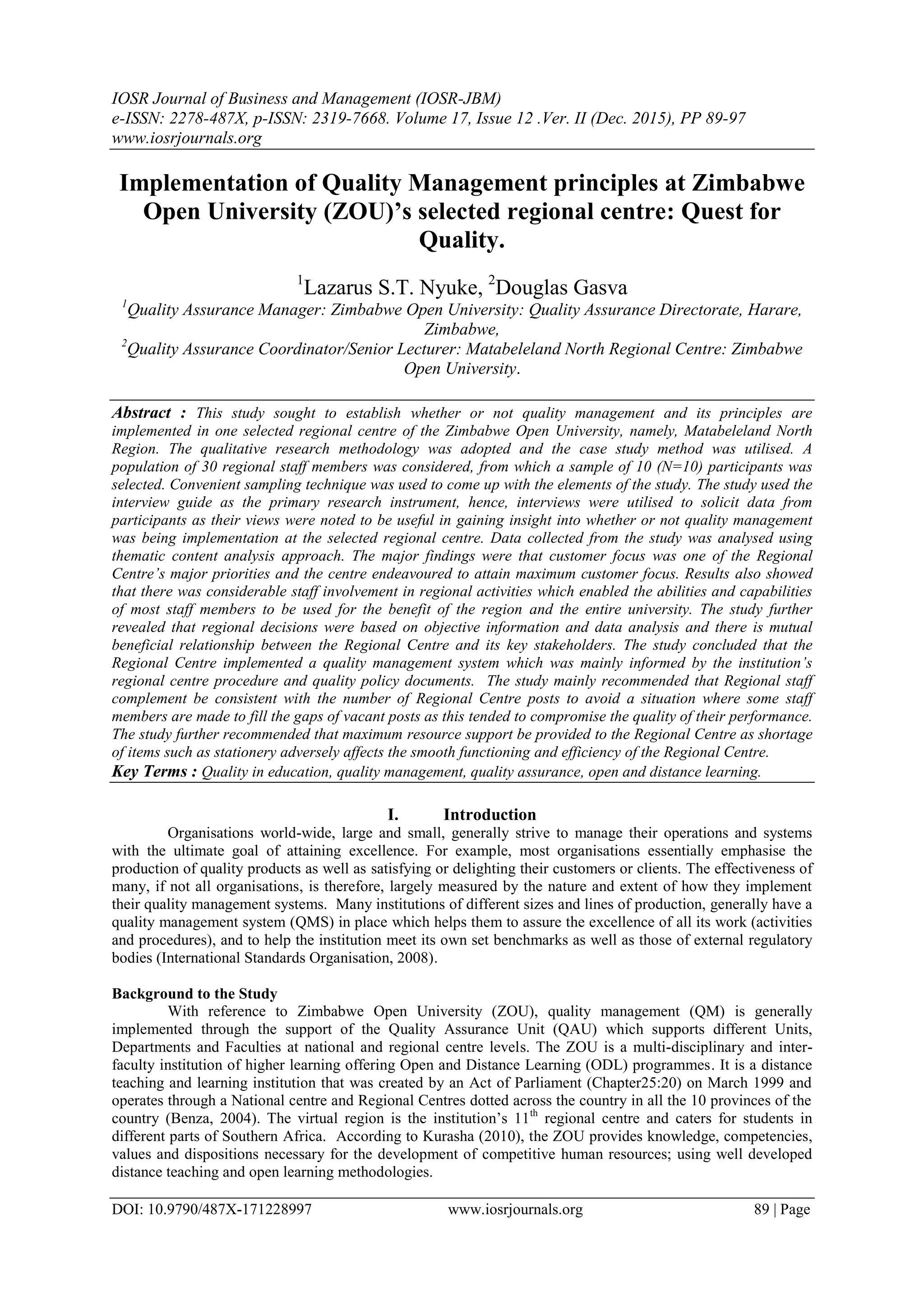
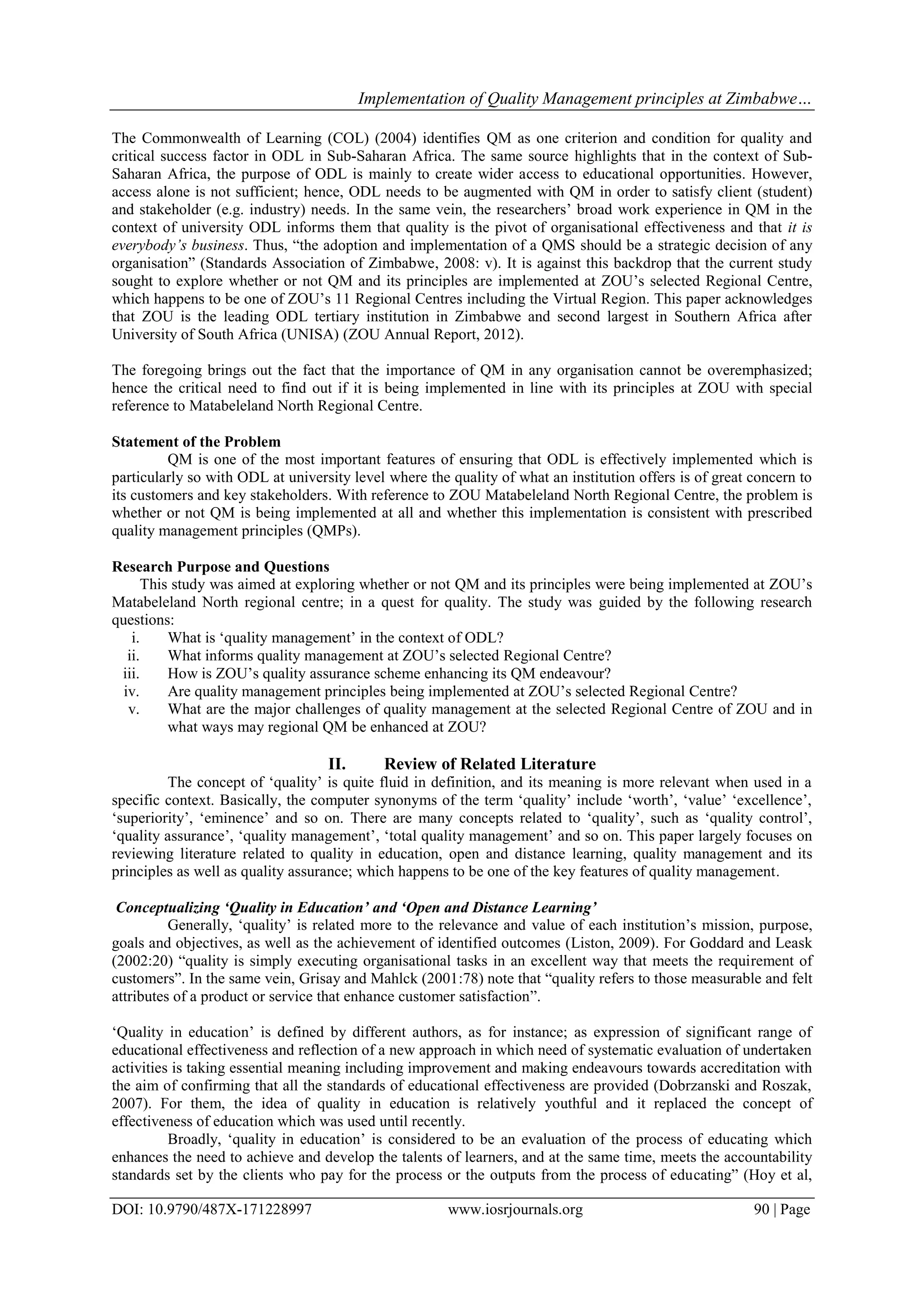

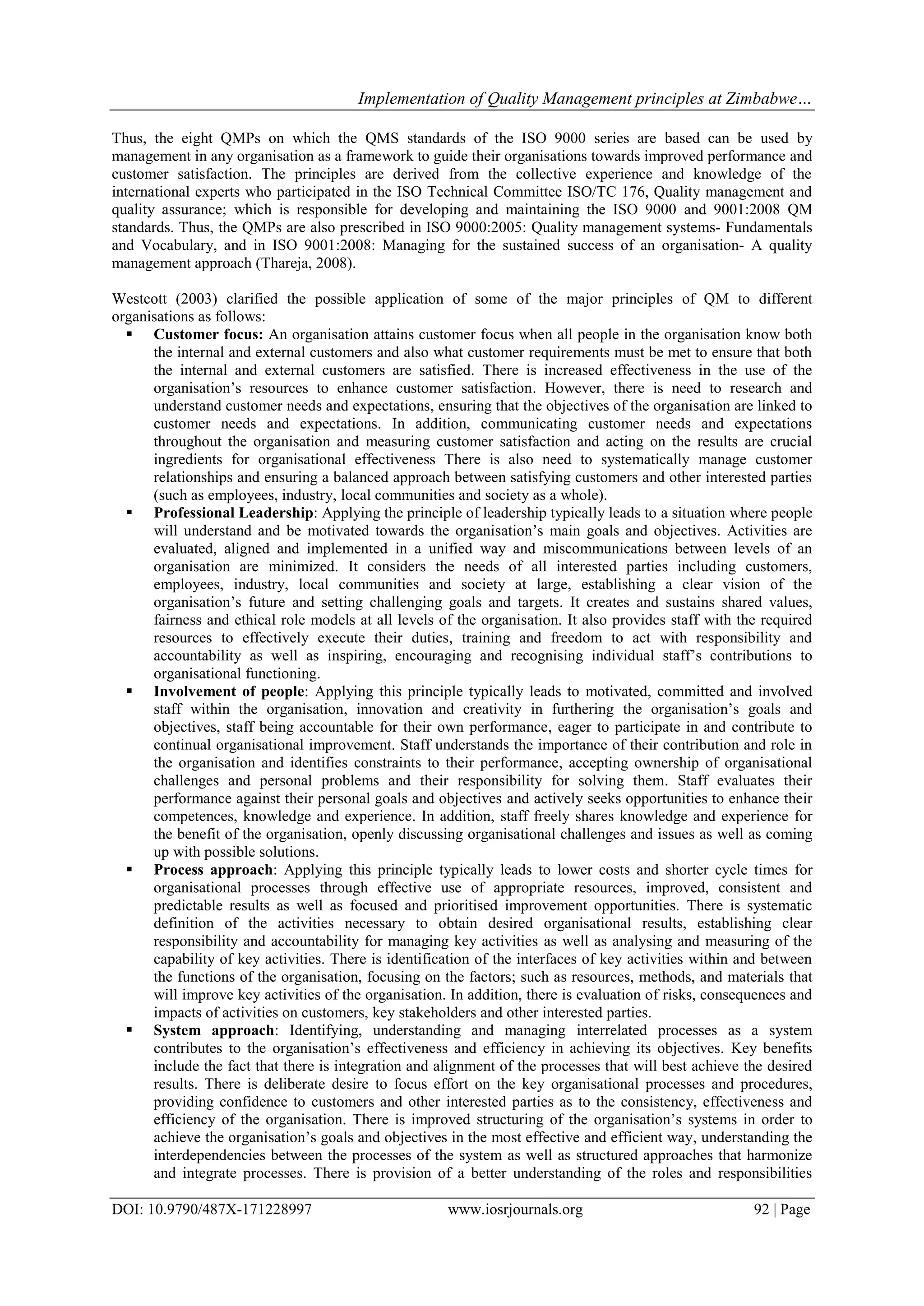
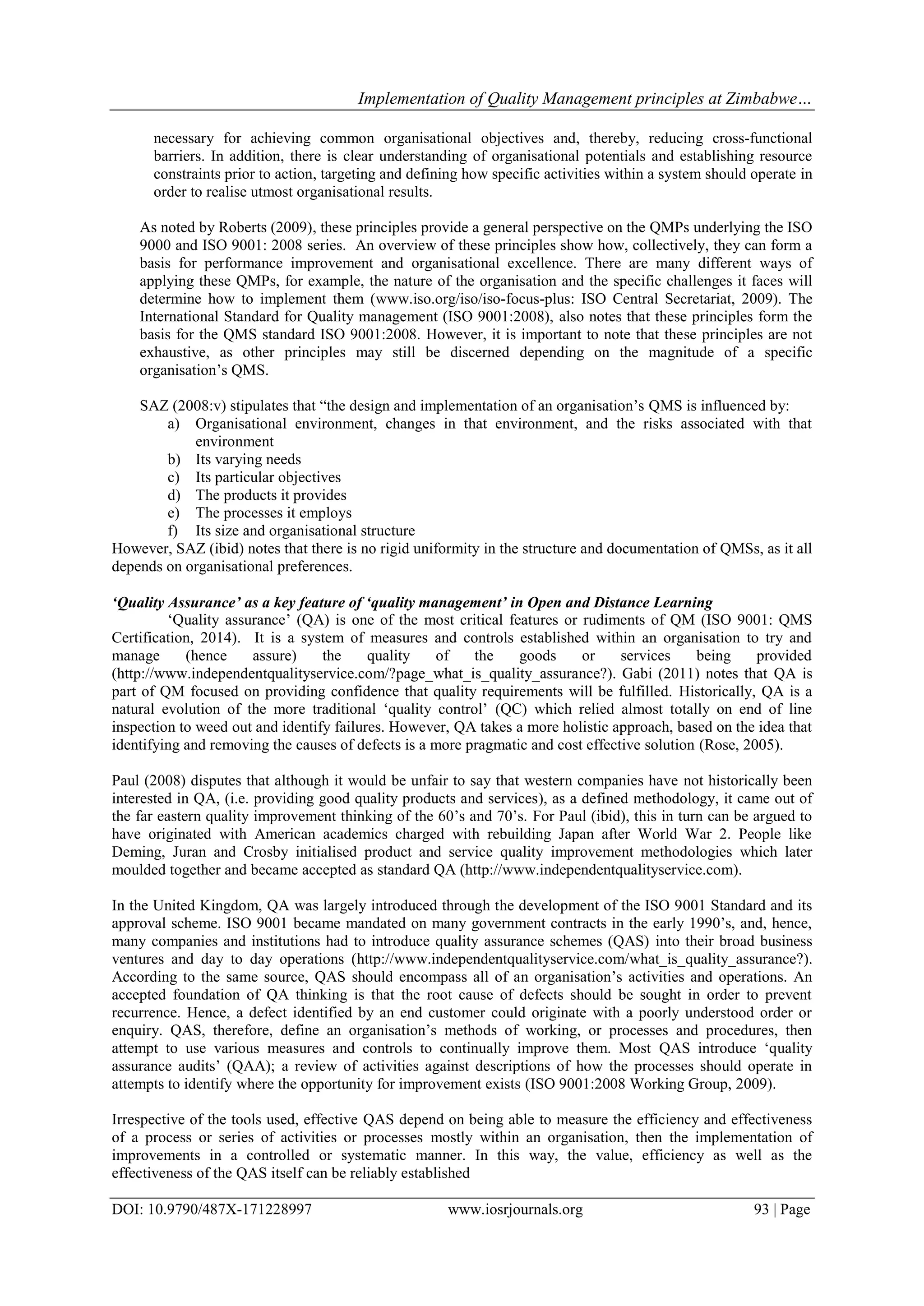


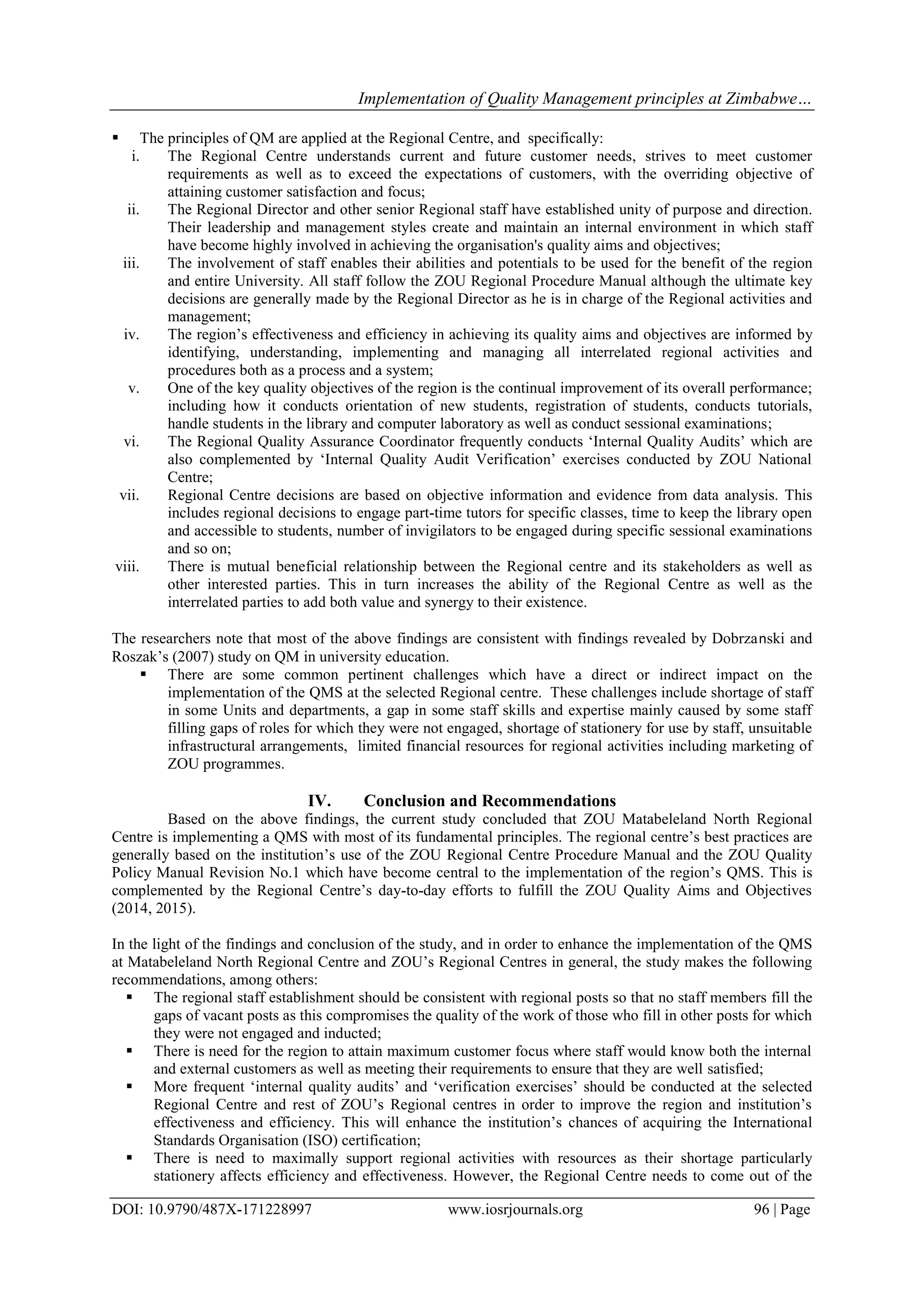
![Implementation of Quality Management principles at Zimbabwe…
DOI: 10.9790/487X-171228997 www.iosrjournals.org 97 | Page
comfort zone of being supported financially by the institution‟s National Centre and fundraise as well as
mobilize financial resources particularly from the ZOU Alumni in the province; which will enhance
effective quality management at the regional centre, hence, becoming a model for other regions.
References
[1] Benza, T.E.S. (2004). Handbook on Admission, Registration and Assessment. Zimbabwe Open University. Harare.
[2] Cianfrani, Charles A.; West, John E. (2009). Cracking the Case of ISO 9001:2008 for Service: A Simple Guide to Implementing
Quality Management to Service Organizations (2nd ed.).
[3] Milwaukee: American Society for Quality. pp. 5–€“7. ISBN 978-0-87389-762-4.
[4] Commonwealth of Learning (2004). Distance Education and Open Learning in Sub-Saharan Africa: Criteria and Conditions for
Quality and Critical Success Factors. Southern African Institute for Distance Education.
[5] Dobrzanski and Roszak (2007). Quality Management in University Education. Journal of Organisational Achievements. Vol.24.
Issue 2
[6] Gabi, B. (2011). ISO 9001:2008 Awareness Course Workshop Presentation paper. Harare. Zimbabwe Open University.
[7] Gwarinda, T.C. (2010). Quality Assurance Structure: Paper presented at the Quality Assurance Training Workshop with Regional
Quality Assurance Coordinators: 2 November 2010. Harare. Zimbabwe Open University.
[8] International ISO 9001: 2008 Conference: Quality Management Strategy, Geneva. May 2010.
[9] International ISO 9001:2008 Working Group. "Taking the First Step with PDCA". 2 February 2009. Retrieved 17 March 2011.
[10] Kurasha, P. (2010). Quality Assurance Unit Workshop Presentation paper. Harare. Zimbabwe Open University.
[11] Littlefield, M. (June 2012). Enterprise Quality Management Software Best Practices Guide. NS Research Quality Management
Systems: 10.
[12] Paul H. S. (December 2008). "Sales Process Engineering: An Emerging Quality Application". Quality Progress: 59–63.
[13] Roberts, M. "Object Oriented Quality Management, a model for quality management.". Statistics Netherlands, The Hague. 2009-04-
29.
[14] Rose, K. H. (July 2005). Project Quality Management: Why, What and How. Fort Lauderdale, Florida: J. Ross Publishing. p. 41.
ISBN 1-932159-48-7.
[15] Standards Association of Zimbabwe (2008). SAZS ISO 9001: 2008: Zimbabwe Standard: Quality Management Systems-
Requirements. ISBN 978-1-77935-846-6. Harare. ISO.
[16] Thareja P. (2008), "Total Quality Organization Through People, Each one is Capable", FOUNDRY, Vol. XX, No. 4, July/Aug 2008
"ISO 9001: Quality Management System QMS Certification". Indian Register Quality Systems. Retrieved 13 March 2014.
[17] The International Standard for Quality management (ISO 9001:2008)
[18] Westcott, Russell T. (2003). Stepping Up To ISO 9004: 2000 : A Practical Guide For Creating A World-class Organization. Paton
Press. p. 17. ISBN 0-9713231-7-8.
[19] http://ssrn.com/abstract=1488690
[20] Zimbabwe Open University 2012 Annual Report. Harare. ZOU.
[21] Zimbabwe Open University Regional Centre Procedure Manual (2012). Harare. ZOU.
[22] Zimbabwe Open University Quality Policy Manual (2013). Harare. ZOU.
[23] Zimbabwe Open University Quality Aims and Objectives (2014). Harare. ZOU.
[24] http://logistics.about.com/od/qualityinthesupplychain/a/TQM.htm
[25] http://searchcio.techtarget.com/definition/Total-Quality-Management
[26] http://www.independentqualityservice.com
[27] http://www.independentqualityservice.com/what_is_quality_assurance?
[28] http://www.webopedia.odl.com
[29] www.iso.org/iso/iso-focus-plus: ISO Central Secretariat, 2009.](https://image.slidesharecdn.com/m0171228997-160129084723/75/Implementation-of-Quality-Management-principles-at-Zimbabwe-Open-University-ZOU-s-selected-regional-centre-Quest-for-Quality-9-2048.jpg)